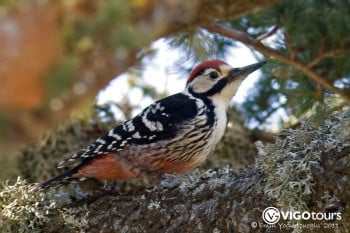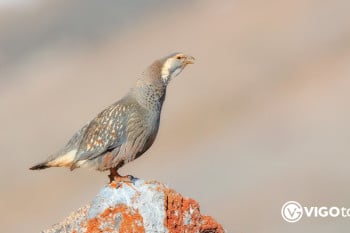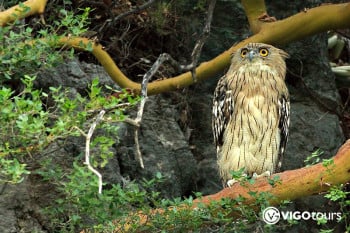Birdwatching Tours in Side, Turkey – Nature & Wildlife Experiences
Side is not only known for its ancient ruins and Mediterranean beaches, but also for its rich biodiversity and unique birdlife. Located between coastal wetlands, rivers, lakes, forests, and mountain ecosystems, the Side and Manavgat region is one of the most interesting birdwatching areas in southern Turkey.
Birdwatching tours from Side offer the opportunity to observe resident and migratory species in their natural habitats, guided by experienced local experts who know the region’s ecosystems in detail. This page brings together the best birdwatching tours in Side, Turkey, designed for nature lovers, wildlife photographers, and serious birders.
Why Choose Side for Birdwatching?
The Side region sits on an important migration corridor connecting Europe, Asia, and Africa. Its diverse landscapes support a wide variety of bird species throughout the year.
Key habitats around Side include:
- Manavgat River and delta
- Oymapinar Lake and surrounding forests
- Taurus Mountain foothills
- Wetlands, reed beds, and coastal zones
Thanks to this ecological diversity, birdwatching in Side can include raptors, waterbirds, forest species, and rare nocturnal birds, making it a rewarding destination for both beginners and experienced birdwatchers.
Best Birdwatching Tours from Side
Bird Watching Tour from Side
For visitors looking for a focused yet accessible nature experience, the bird watching tour from Side, Turkey is an excellent introduction to the region’s birdlife.
This tour typically explores nearby wetlands and river areas where participants can observe a wide range of species, including herons, kingfishers, raptors, and seasonal migratory birds. It is suitable for nature enthusiasts who want to experience birdwatching without long travel distances.
Brown Fish Owls at Oymapinar Lake (Manavgat)
One of the most unique wildlife experiences in the region is the chance to observe the rare Brown Fish Owl. The Brown Fish Owls at Oymapinar Lake near Manavgat tour focuses on this iconic species and its specific habitat.
Oymapinar Lake and its surrounding forests provide ideal conditions for these elusive owls. This specialized birdwatching experience is especially appealing to serious birders and wildlife photographers looking for rare and memorable sightings.
2-Day Bird Watching Tour to Demirkazik
For advanced birdwatchers seeking mountain and alpine species, the 2-day bird watching tour to Demirkazik offers a deeper exploration of Turkey’s high-altitude ecosystems.
Demirkazik, located in the Taurus Mountains, is known for its unique bird species that are rarely seen in coastal regions. This multi-day tour allows participants to explore different habitats, increasing the chance of observing rare and endemic species while enjoying dramatic mountain landscapes.
What Makes These Birdwatching Tours Special?
Birdwatching tours from Side are not mass tourism activities. They are carefully planned experiences focusing on:
- Small group sizes
- Minimal disturbance to wildlife
- Knowledgeable local guides
- Respect for natural habitats
Tours are adapted to seasonal conditions and migration periods to maximize observation opportunities.
Who Are These Tours For?
Birdwatching tours in Side are ideal for:
- Nature and wildlife enthusiasts
- Amateur and professional birdwatchers
- Wildlife photographers
- Travelers looking for quiet, meaningful experiences
- Visitors interested in Turkey’s natural heritage
No prior birdwatching experience is required for most tours, while more advanced options are available for experienced participants.
Best Time for Birdwatching in Side
Birdwatching in the Side region is possible throughout the year, but peak seasons are:
- Spring – major migration period
- Autumn – return migration and raptor movements
Different species can be observed depending on the season, habitat, and altitude.
Why Book Birdwatching Tours with Vigo Tours?
Vigo Tours works with experienced local guides who have deep knowledge of the region’s ecosystems and bird species. Tours are designed with respect for nature and wildlife, ensuring responsible and sustainable birdwatching experiences.
By booking with Vigo Tours, you benefit from:
- Carefully selected, specialist tours
- Local expertise and field knowledge
- Clear tour information and planning
- Reliable organization and support
Frequently Asked Questions About Birdwatching Tours in Side
Do I need prior birdwatching experience?
No. Most tours are suitable for beginners, while advanced tours are available for experienced birdwatchers.
Are these tours suitable for photography?
Yes. Many participants join these tours specifically for wildlife and bird photography.
Are bird sightings guaranteed?
Birdwatching involves wild animals in natural habitats, so sightings cannot be guaranteed. However, tours are planned to maximize observation opportunities based on season and location.



